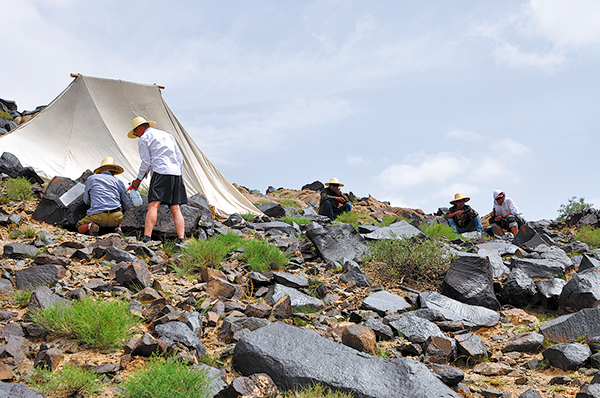

So the first thing Fan did when he was promoted as the head of the Alshaa Right Banner Cultural Heritage Protection Center in 2000 was launch a comprehensive investigation of the site, where these carvings are engraved on cliffs and boulders.
The survey revealed the rock art had survived thousands of years of weathering by wind and rain but was at risk of vanishing in the near future if left unprotected.
About 2,000 petroglyphs were damaged or stolen between their initial discovery in 1985 and the early 2000s, Fan says.
He established a temporary protection station with two staffers and checkpoints at the main entrance.
The site received official protection from the autonomous region's government in 2003, when Fan took a team of six to survey the Mandela Mountains' petroglyphs.
Every day from April to September that year, team members carried 15-kilogram packs as they marked and photographed each example.
They made records of 4,234 petroglyphs, including 4,800 photos, 260 replicas and over 50 rubbings, and used these records to produce an atlas of the site later that year.
During the survey, the paintings were fenced in, and a tourist trail was paved.